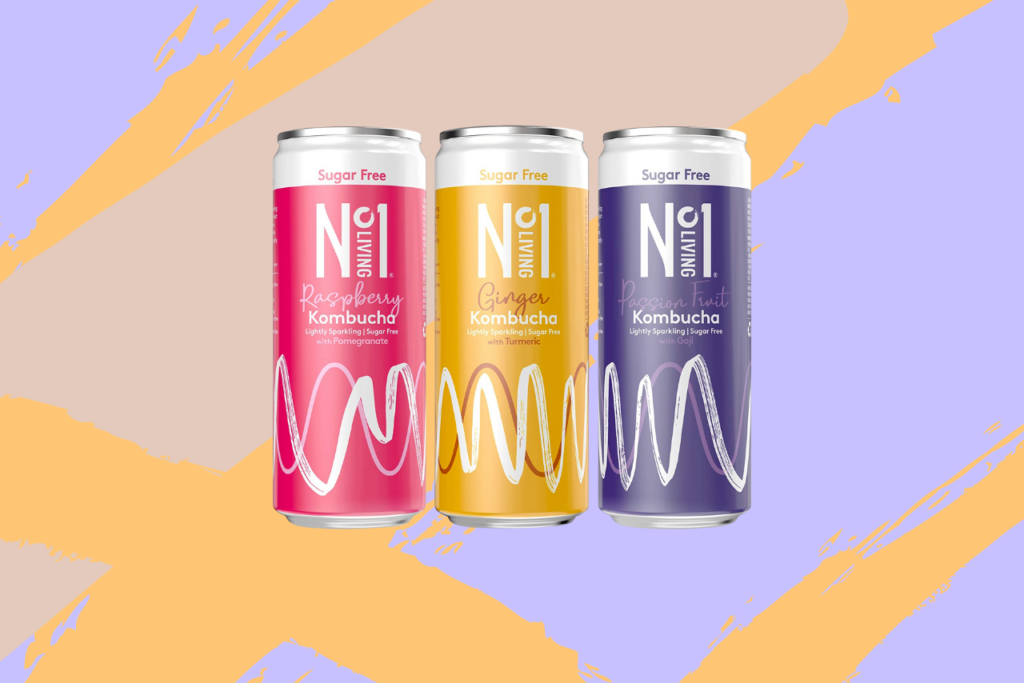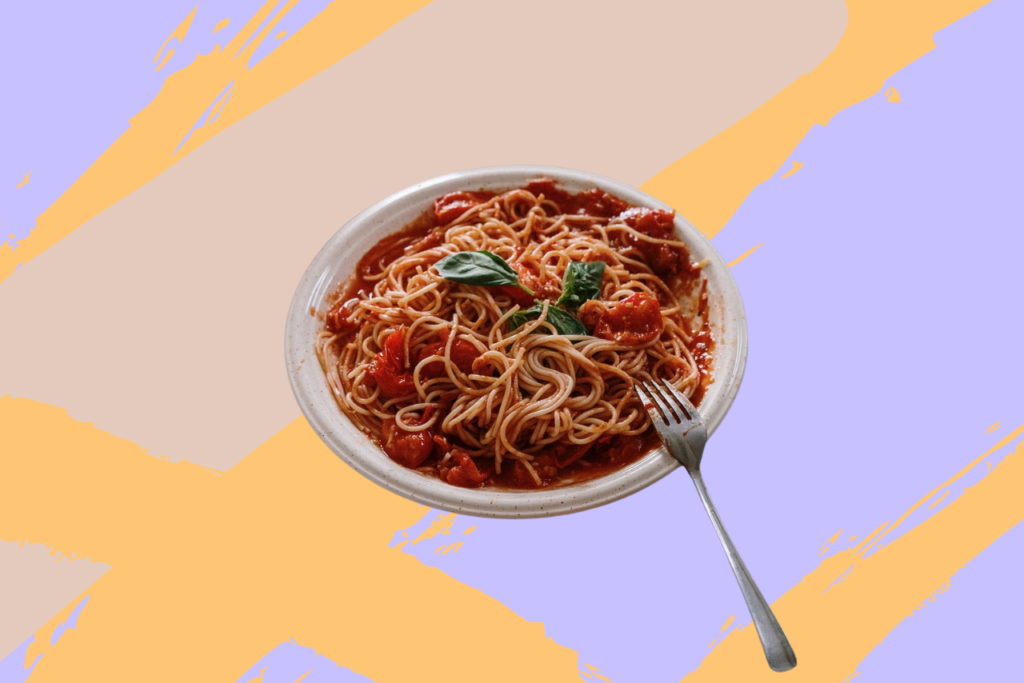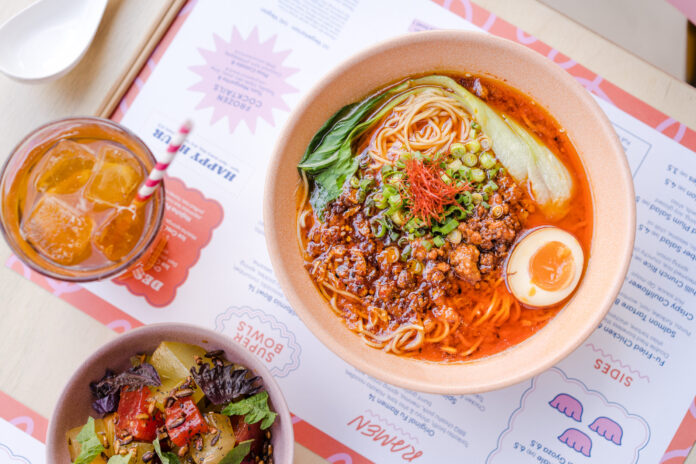Whether it’s your smartphone, trainers, or even your furniture, the ‘Made in China’ label is as ubiquitous as it comes, owing to the country’s role as the world’s largest exporter.
But beyond simply mass-producing everyday items, the Red Dragon has invented a whole host of cool things down the millennia, from paper and gunpowder to compasses and umbrellas. We owe much to our comrades on the opposite side of the earth, that’s for sure.
And when it comes to food and drink, China’s impact goes way beyond their masterful, hugely diverse cuisine, and the delicious ingredients, such as soy sauce, star anise, and even our beloved tea, that grace every British larder.
Today, we’re looking at (and hopefully eating!) some food and drink staples that you may not know originated from the global superpower. Here are 5 foods and drinks you didn’t know were from China.
Kombucha
A kombucha craze is sweeping the planet, with the global market expected to skyrocket from a value of £1.35 billion in 2019 to £7.7 billion in 2027.
If you’re not yet familiar with this glorious elixir, as explained by organic and vegan kombucha brand No. 1 Living, “kombucha is a fizzy, fermented, sweetened tea made through a double fermentation process. This involves mixing a SCOBY (a pancake-shaped symbiotic culture of bacteria and yeast) with sweetened tea, with the bacteria and yeast converting the sugar into ethanol and acetic acid.”
Many people mistakenly believe that kombucha originates from Japan owing to the Japanese etymology behind the word. But its name was actually derived from a man named Dr Kombu who brought the beverage to the Japanese Emperor Inyoko in 415 AD. With the term ‘cha’ (meaning tea in Japanese) added to his name, the term ‘kombucha’ was born.
Indeed, despite the drink’s name, it turns out that it likely originates from China instead. Kombucha is speculated to have been created by the Qin Dynasty in around 220 BC for the Emperor Qin Shi Huangdi, and was called “The Tea of Immortality” or the “Elixir of Life”.
Yep, though it feels like kombucha is a modern, trendy drink here in the UK, it’s been enjoyed for more than 2000 years out east.

Sushi
Similar to kombucha, sushi is also thought to have originated in Japan. While the Japanese certainly popularised and perhaps even perfected it, the majority of experts on its history believe that China is actually sushi’s country of origin.
It is believed that this stems from the practice of pickling fish by hill tribes in ancient southern China, with the rice added in order to preserve it. Sushi didn’t actually arrive in Japan until the Nara era (710-794), when numerous descriptions of the dish from the literature at the time appeared.
Nowadays, sushi is consumed with passion across the world, with the US sushi restaurant market alone worth an estimated £16.6 billion alone. The dish first came to the ‘Western’ world in the early 1900s after an influx of Japanese migrants moved to the US. However it wasn’t until the 1970s that sushi surged in popularity, which coincided with advances in refrigeration technology and the ability to send sushi-grade fish across countries and continents.
Interestingly, miso, the traditional Japanese seasoning of fermented soybeans, is also thought to have been invented in China.

Ketchup
Although it’s often said that ketchup originated in England, using mushrooms rather than tomatoes, it actually comes from China, too.
In fact, the word ‘ketchup’ is derived from the Chinese word ‘ke-tsiap’, which means ‘pickled fish sauce’. This mixture dates back to as far as 300 BC, and was originally used as seasoning rather than as a condiment.
Ketchup’s popularity spread to Malaysia and Indonesia over time – where the much loved seasoning Kecap Manis is believed to be a long lost cousin to ketchup – but it wasn’t until the seventeenth century that it was discovered by English sailors travelling there. They then replicated the sauce back in their home country using mushrooms.
Read: 7 incredible vegetarian condiments, sauces and seasonings
It took another couple of centuries or so for tomato ketchup to start popping up in recipes and literature here in the UK and in the US, with a written recipe for ketchup first appearing in the 1801 cookbook The Sugar House Book and 1824’s The Virginia Housewife.
This variation slowly grew in popularity throughout the century, and was first bottled by Jonas Yerkes in the 1830s. F. & J. Heinz launched its tomato ketchup in 1876, and the rest, as they say, is history.
Nowadays, Heinz is truly synonymous with the sauce, and holds an 80% market share of ketchup in Europe and a 60% share in the US.

Pasta, Perhaps
We hate to do this in a week when Italy failed to qualify for the World Cup, but some historians believe that pasta originated in China, too. Indeed, it’s sometimes suggest that Marco Polo brought back noodles to Italy in the 13th Century after trying them in China, and although this fact is often disputed, there are historical records of noodle dishes in China dating back thousands of years.
In fact, back in 2005, archaeologists unearthed a 4’000 year old bowl of well-preserved yellow noodles buried under three metres of sand at the Lajia archaeological site in northwestern China.
For many, this ended the debate as to who invented the noodle/pasta, but it’s entirely possible that creating long strands of edible deliciousness from flour and liquid emerged in the West (or, as many believe, in the Middle East) completely free from inspiration from Chinese noodles.
As if to rub salt into the wound (don’t rub it into your pasta dough – only salt the water), many also credit China with introducing pizza to the world, in the form of the delicious spring onion pancake known as Bing (饼). Urban myth suggests that – you guessed it – Marco Polo tried bing in China before bringing the concept back to Italy.
This theory, we should say, has largely been debunked, as wood fired flatbreads with toppings have existed all over the world, independently of one another, for thousands of years.

Ice Cream
Though the ancient Romans and Persians both enjoyed flavoured ice as a treat on a hot day, it’s believed that the Chinese were the first to combine dairy with ice, and can therefore be credited with inventing ice cream, too!
The first records of flavoured ice and dairy being used together appear during the Tang dynasty’s reign, between 618 to 906 A.D. In fact, there are records of King Tang of Shang having a near 100 dedicated ‘ice men’, who would regularly prepare a dish of buffalo milk, ice, flour used as a thickening agent, and camphor, the latter of which you may recognise if you smell it, since it gives Vicks VapoRub its characteristic fragrance. Punchy!

And if you fancy making a tub of the good stuff, check out these tips on making homemade ice cream. Be warned that camphor has irritant properties and shouldn’t actually be ingested.





